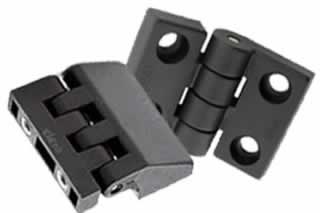
When most people think of hinges, they envision metal door hinges. Door hinges feature a traditional style consisting of two leafs and an integrated knuckle. They are typically made of metal, such as stainless steel, brass, copper or even bronze. There are other types of hinges available, however, including plastic and living.
What Are Plastic Hinges?
Plastic hinges are mechanical bearings that are made of plastic. Like all hinges, they are used to connect two surfaces or objects while allowing for a limited range of rotation. Plastic hinges are commonly used for packaging, food storage containers and in other applications where the lid needs to be opened and closed repeatedly.
Plastic hinges are often preferred over metal hinges due to their lightweight and corrosion-resistant properties. They weigh less than hinges made of metal, and many plastic hinges are also better protected from corrosion.
What Are Living Hinges?
Living hinges are mechanical bearings that are thin and flexible. They are used for the same purpose of connecting two surfaces or objects while allowing for a limited range of rotation. Living hinges, however, are thin and flexible.
They are known as “living hinges” because they can bend. Bending a living hinge will allow one of the surfaces or objects to pivot relative to the other without breaking.
Differences Between Plastic and Living Hinges
Many living hinges are made of plastic, but that doesn’t mean they are the same as plastic hinges. Plastic hinges are typically larger, thicker hinges made of hard plastic. Living hinges, in comparison, are smaller and thinner hinges made of soft plastic.
Most living hinges are made of polypropylene plastic. Polypropylene is a specific type of plastic that’s prized for its flexible and soft properties. You can bend polypropylene plastic without breaking it. These flexible and soft properties make it a popular choice of material for living hinges.
Plastic and living hinges are used in different applications. Because they are flexible, living hinges are commonly used in medical applications. Pill bottles and cases, for instance, may feature an integrated living hinge. Plastic hinges are more common in traditional hinge applications, such as packaging and food storage containers.
Another difference between plastic and living hinges is their size. As previously mentioned, plastic hinges are typically larger than living hinges. Living hinges may be longer, but they are usually made of a thinner material than plastic hinges.
